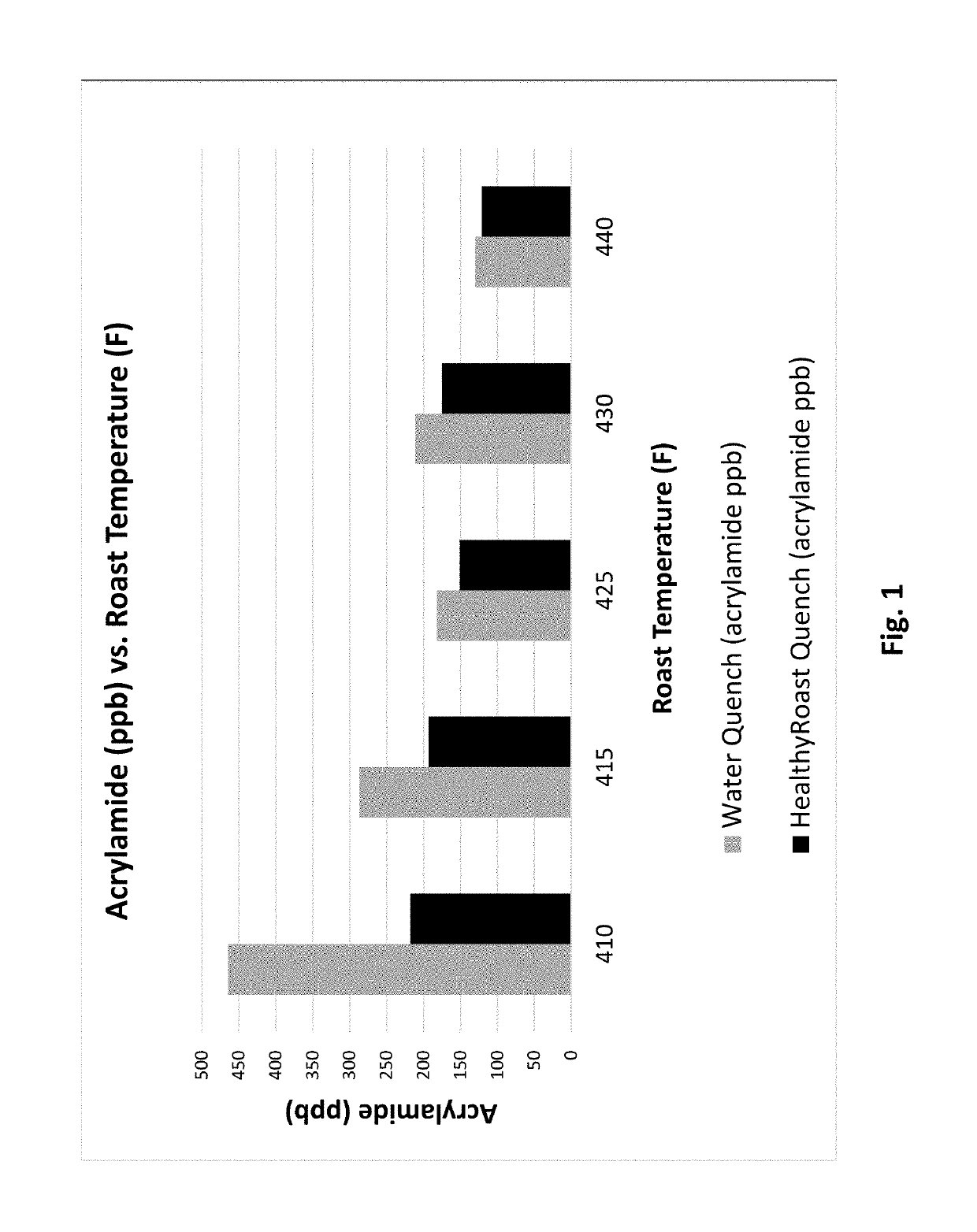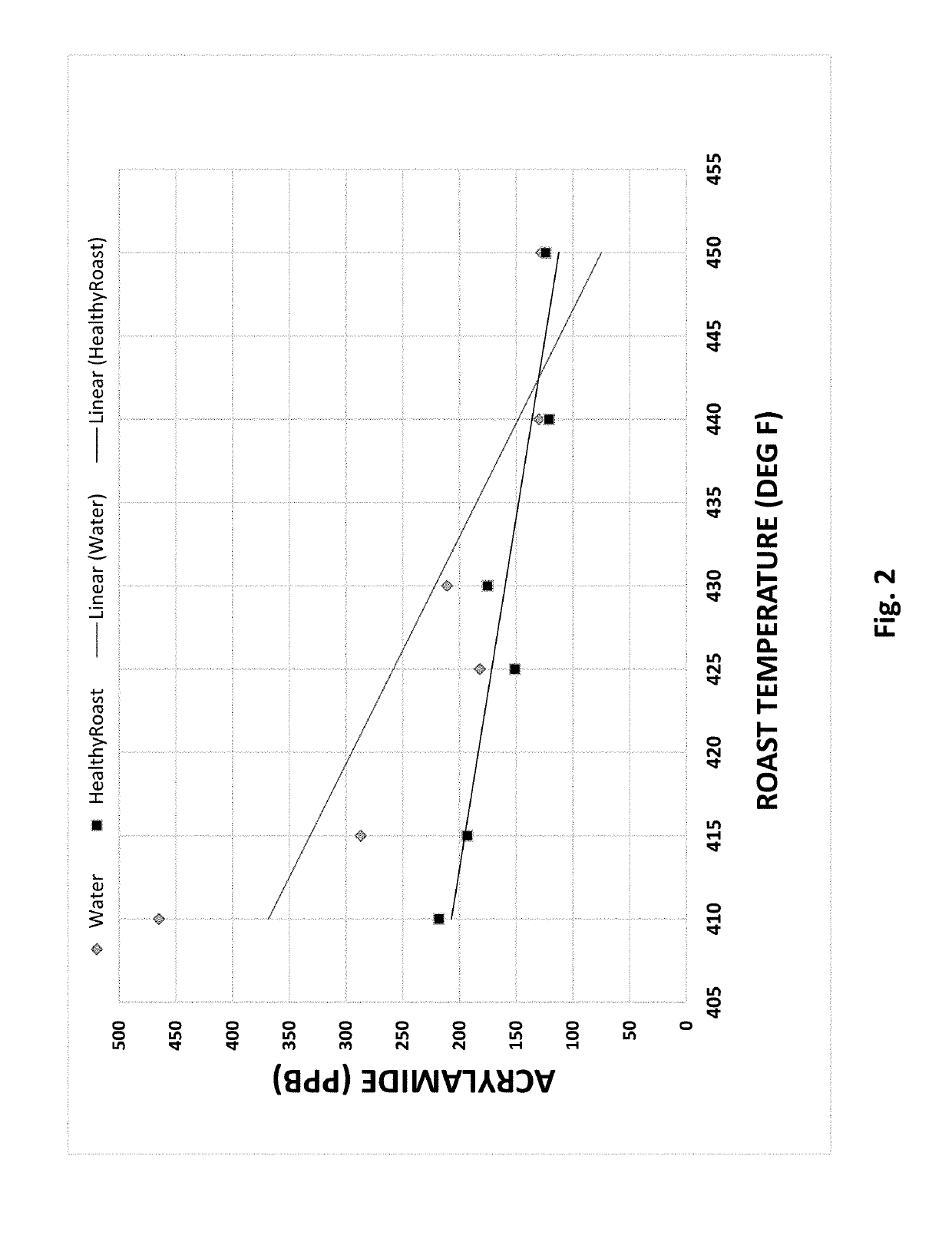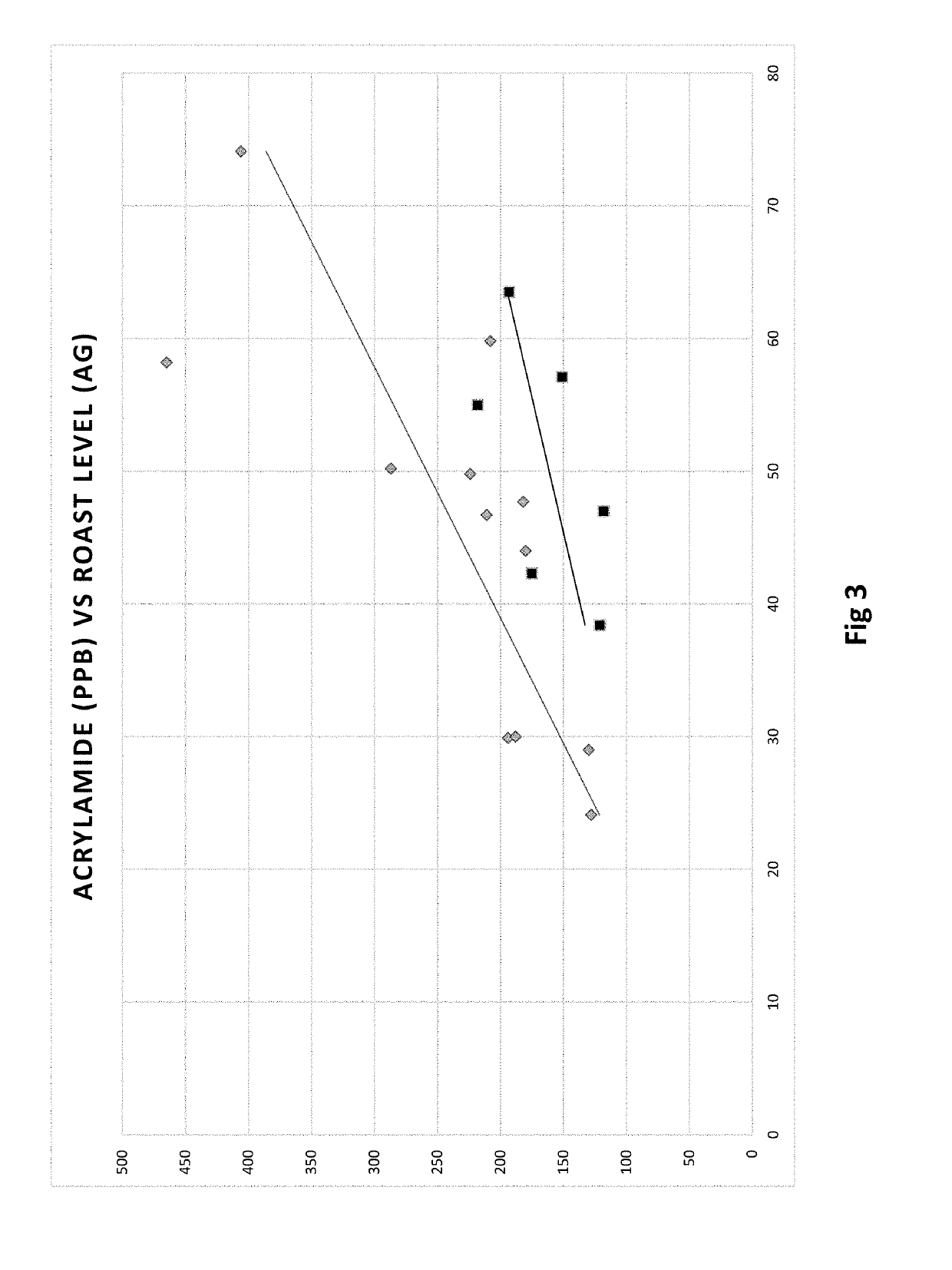Method for enhancing postprocessing content of beneficial compounds in beverages naturally containing same
a post-processing content and beneficial compound technology, applied in the field of conventional foods, beverages, nutritional supplements, can solve the problem of significant loss of beneficial compounds
- Summary
- Abstract
- Description
- Claims
- Application Information
AI Technical Summary
Benefits of technology
Problems solved by technology
Method used
Image
Examples
example 1
[0019]Raw green coffee beans are pre-soaked in water for 3 hours at 75 deg C. 1000 grams of green beans soaked in 2000 mls of water. 1000 mls of pre-soak solution (water used for pre-soaking) was retained after beans are removed from water for roasting. 650 grams of pre-soaked green beans are roasted in a traditional coffee roaster with temperature starting at 350 deg F. and increasing to 430 deg F. over a period of approximately 15-18 minutes.
[0020]At the conclusion of the roast, the beans are dropped into a container and immediately quenched with 150 mls of the pre-soak solution that contains 23% total chlorogenic acid. The container is agitated slightly to evenly distribute the presoak liquid onto the roasted beans and ensure uptake of the liquid into the bean cell wall. It should be noted the quench step does not produce a roasted bean that is saturated only slightly coated with the presoak liquid. The roasted beans are air-dried and the roasted beans are then ground to a powder...
example 2
[0022]Raw green coffee beans are pre-soaked in water for 3 hours at 80 deg C. 1000 grams of green beans soaked in 2000 mls of water. During the presoak step the beans are completely submersed in water and the soak tank is slightly agitated. 1000 mls of pre-soak solution was obtained Pre-soak water with a chlorogenic acid content of 25% is collected for later quenching step. 1400 grams of regular green beans are roasted in a traditional manner. Upon completion of the roast while the beans are still very hot (>400 deg F.) the beans are split into a control and an experimental group and subsequently quenched with either 150 mls of water (control) or 150 mls of the pre-soak solution that has been previously collected from green beans. Quenching consists of atomizing the presoak liquid onto the bean in an even dispersed manner to achieve a bean contact surface area of >90%. (experimental). The green beans used to create the pre-soak quenching solution are not the beans that are use in th...
example 3
[0024]Raw green coffee beans are pre-soaked in water for 3 hours at 80 deg C. 1000 grams of green beans soaked in 2000 mls. of water. 1000 mls of pre-soak solution was obtained. Pre-soak water is collected for later quenching step. A portion of the pre-soak water is collected and freeze dried to be used as a fortifying ingredient in the pre-soak quench. 1400 grams of regular green beans are roasted in a traditional manner. Upon completion of the roast the beans are split into a control and an experimental group and subsequently quenched with either 150 mls of water (control) or 150 mls of the pre-soak which has been fortified with 10 grams of freeze dried pre-soak. All pre-soak solution has been previously collected and / or collected and freeze dried from green beans. (experimental). The green beans used to create the pre-soak quenching solution are not the beans that are use in the roasting. The roasted beans are then air dried, ground to a powder and brewed with hot water to produc...
PUM
 Login to View More
Login to View More Abstract
Description
Claims
Application Information
 Login to View More
Login to View More - R&D Engineer
- R&D Manager
- IP Professional
- Industry Leading Data Capabilities
- Powerful AI technology
- Patent DNA Extraction
Browse by: Latest US Patents, China's latest patents, Technical Efficacy Thesaurus, Application Domain, Technology Topic, Popular Technical Reports.
© 2024 PatSnap. All rights reserved.Legal|Privacy policy|Modern Slavery Act Transparency Statement|Sitemap|About US| Contact US: help@patsnap.com










